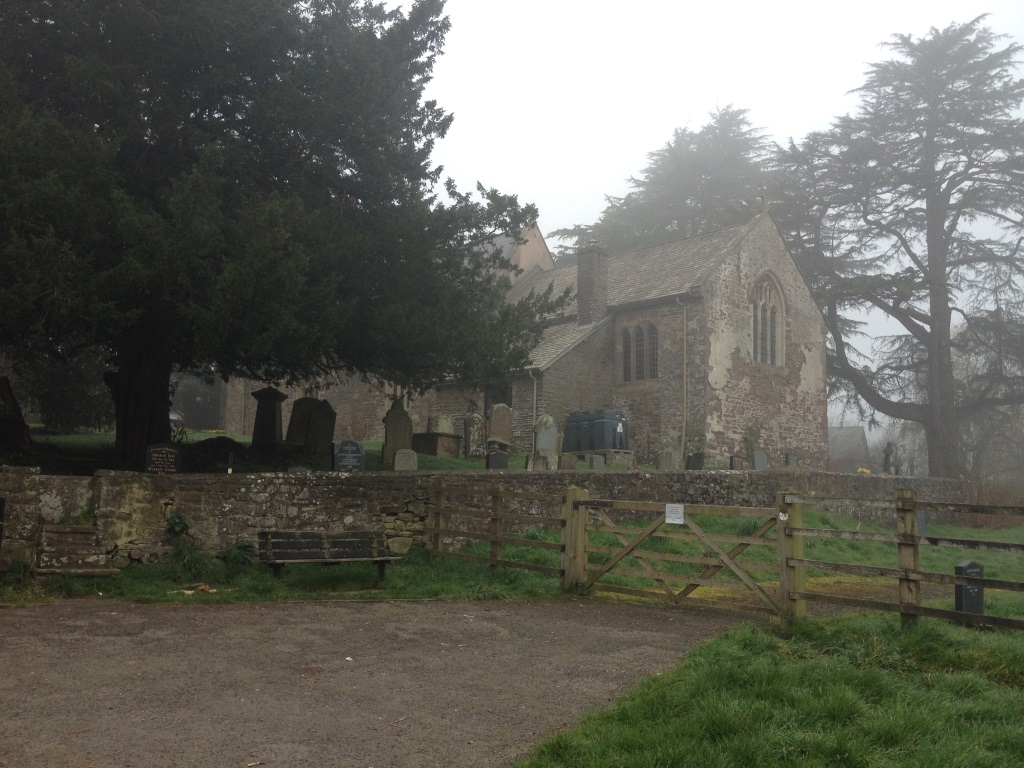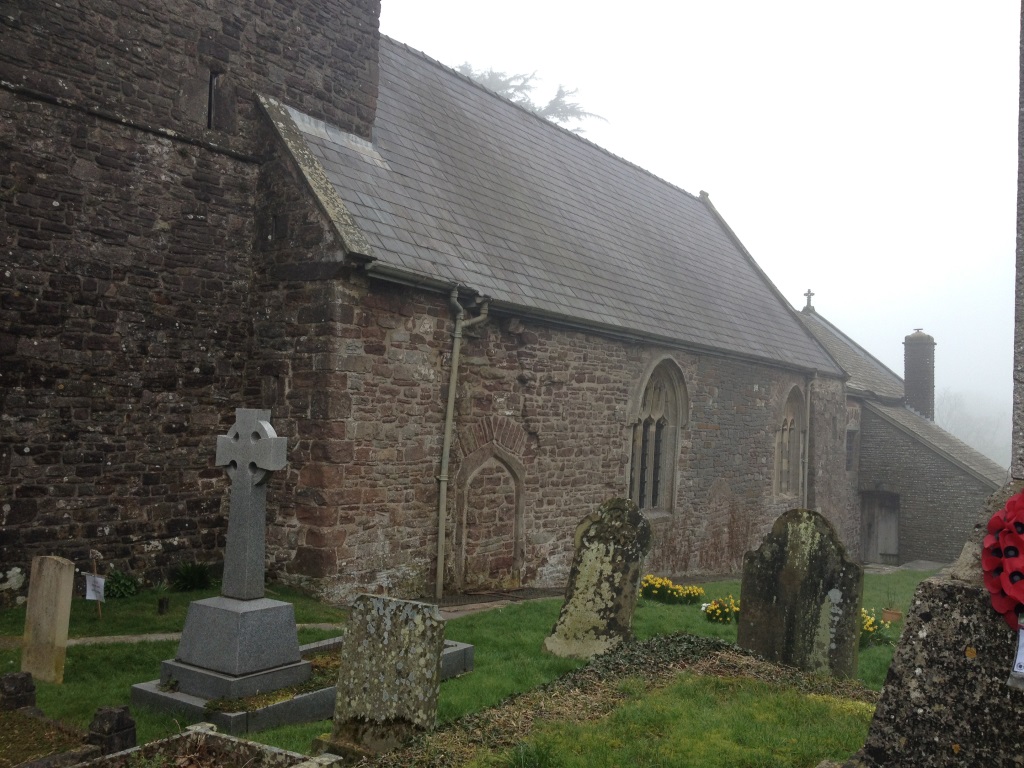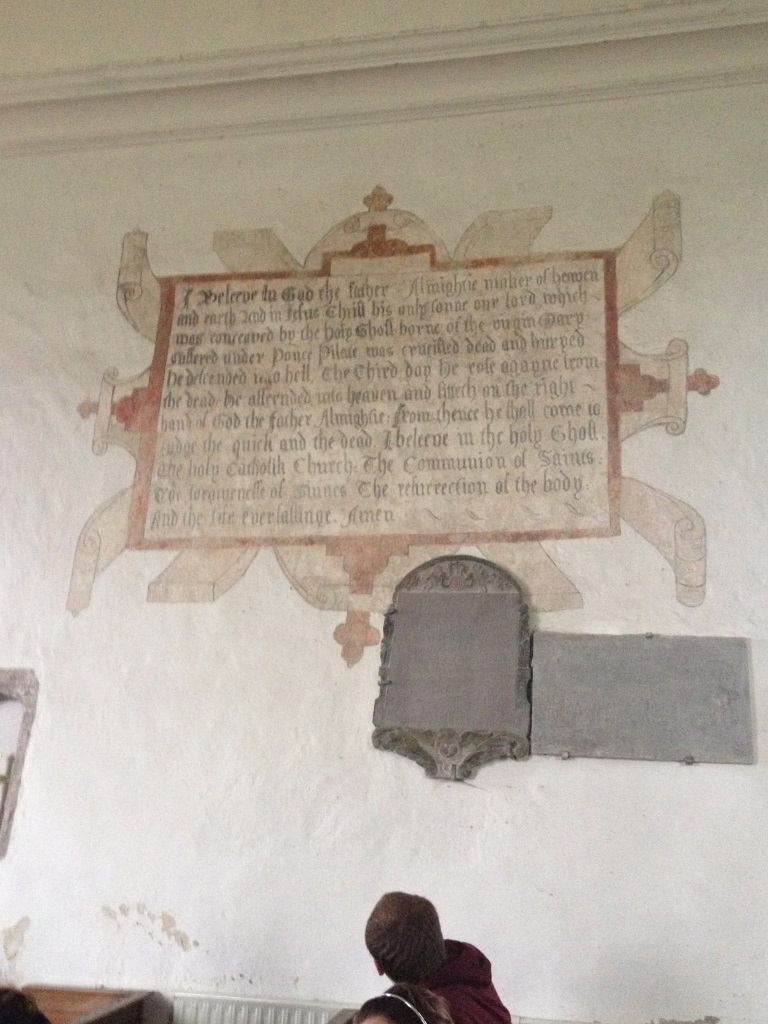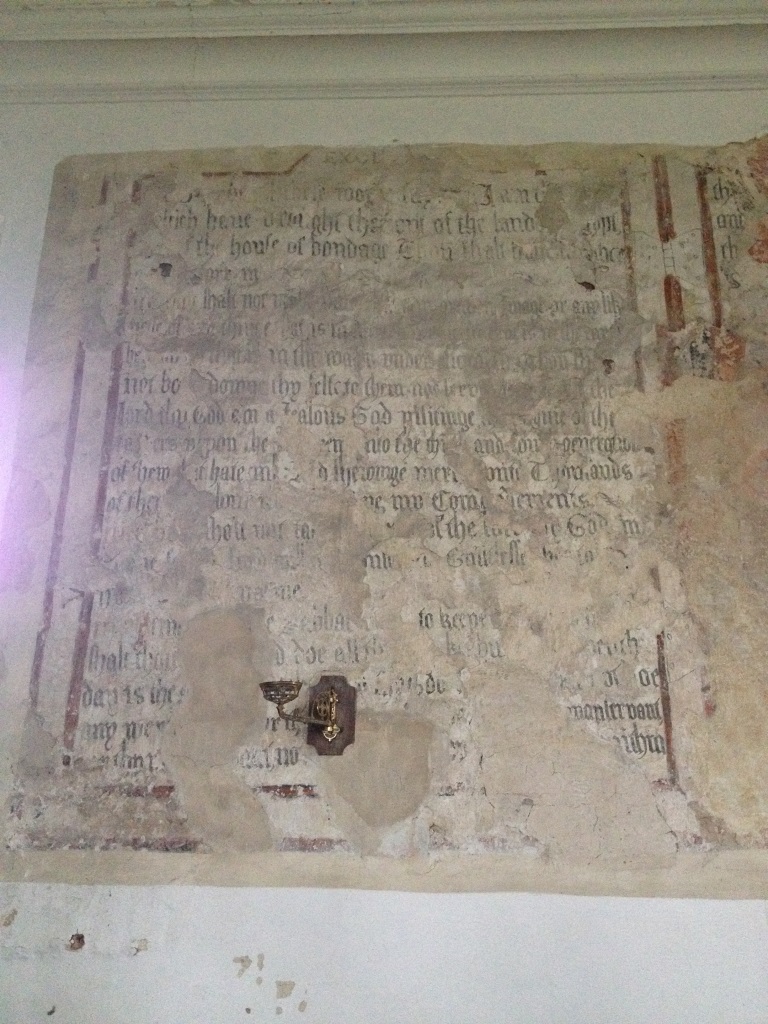Our annual field trip up the Usk to Llangybi: we can get there, look at the medieval wall paintings and the holy well and get back within a 2-hour lecture. This year, the church was more than usually mysterious in the mist:
The south wall is full of building history:
probably a sixth-century church of wattle and daub, rebuilt in stone by the Normans but rebuilt again in the fifteenth century. Why? – partly the ravages of a century of economic crisis, partly the enthusiasm of local people for beautifying their place of worship.
Inside there is much to look at:
The stairs to the destroyed rood loft
lit at the top: the lofts were used for singing part of the liturgy, and sometimes for readings.
The famous wall painting of the ‘Sunday Christ’ is virtually unphotographable – it’s easier to understand from this sketch hanging underneath.
And why is this instructional painting, a warning against sabbath-breaking, in the chancel? Was my former student Eluned Martin right – did it mark the location of the Easter Sepulchre?
In the nave, another warning: the Weighing of Souls
but to encourage you, the Virgin Mary is shown placing her rosary in the balance beam to weigh it down on the side of salvation.
These wall paintings were limewashed over at the Reformation and replaced with texts: the Creed
and the Ten Commandments actually over part of the Weighing of Souls
Finally, at the west end, a puzzle:
the font, dated 1662 and decorated with the coats of arms of local families.
The medieval font must have been destroyed during the Civil War and this replacement celebrates the restoration of both monarchy and Anglican church in 1660. In the end, Archbishop Laud got all he wanted: but of course he had been executed in 1645.
(Many thanks to Claire Lindsey McGrath for the photos)












